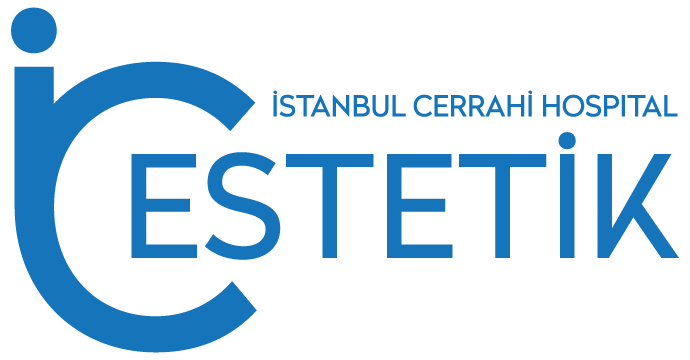Beard Transplant
A beard transplant is an elective cosmetic surgery that involves the transplantation of hair follicles from another part of the patient’s body to the desired location on the face. It is typically performed for aesthetic purposes, especially for men who desire a fuller beard but are unable to achieve it naturally.
Similar to other hair transplant procedures, a beard transplant involves several steps. The initial step is the extraction of hair from a donor area, commonly the back and sides of the scalp. Since using hair from another person carries a high risk of rejection by the immune system, facial hair implants from the patient’s own body are used during a beard transplant. Using hair from the patient’s own body ensures the best match and a natural appearance. In cases where there is insufficient hair on the scalp, the surgeon may recommend harvesting hair follicles from other areas of the body. The second part of the procedure involves implanting the harvested hair onto the face. The exact location of the transplant depends on the patient’s desired outcome. For those with existing facial hair, the focus may be on filling in patches, while individuals with minimal or no facial hair may opt for adding hair to the cheeks, upper lip, and chin.
During a beard transplant, the hair specialist typically employs one of two procedures: follicular unit extraction (FUE) or follicular unit transplantation (FUT). Each technique has its own advantages and disadvantages, and your surgeon will discuss these options with you and recommend the most suitable method based on your goals and hair needs.
The results of a facial hair transplant are permanent. Once the transplanted hair starts to grow, you can freely style your new beard as desired. Additionally, if you ever decide to have a clean-shaven look, you have the option to shave off the transplanted hair.
Candidates for Beard Transplants
Suitable candidates for a beard transplant are typically individuals who:
- If you have patchy or thin facial hair and want to achieve a denser and more even beard, a transplant can be a suitable option.
- The hair used for the transplant needs to be sourced from your own body, typically the back or sides of the scalp. Sufficient donor hair availability is essential to achieve the desired results.
- Being in good general health is important to ensure a safe surgery and optimal recovery. If you have any chronic medical conditions, such as uncontrolled diabetes or high blood pressure, your surgeon may recommend managing these conditions before proceeding with the transplant.
- It’s important to have realistic expectations about the outcomes of the beard transplant. Your surgeon can discuss the potential results based on your individual case and help you understand what can be realistically achieved.
- Following the transplant, proper post-operative care is crucial for optimal healing and hair growth. Candidates should be willing to follow the surgeon’s instructions regarding aftercare and be dedicated to maintaining a healthy lifestyle to support hair growth.
Beard Transplant Procedure
The beard transplant procedure typically involves the following steps:
Consultation: You will have an initial consultation with a hair transplant specialist to discuss your goals, expectations, and suitability for the procedure. The specialist will evaluate your facial hair growth pattern, donor hair availability, and determine the best approach for your specific case.
Donor hair extraction: The surgeon will identify the donor area, which is usually the back or sides of the scalp, where hair follicles are abundant and resistant to balding. The hair follicles will be extracted using either the follicular unit extraction (FUE) or follicular unit transplantation (FUT) technique.
- FUE: Individual hair follicles are extracted one by one using a micro-punch tool. This minimally invasive method leaves tiny puncture wounds that heal without leaving noticeable scars.
- FUT: A strip of hair-bearing scalp tissue is surgically removed from the donor area, and the individual hair follicles are then dissected from the strip. This method leaves a linear scar that can be concealed by surrounding hair.
Hair follicle preparation: The extracted hair follicles are carefully examined and prepared for transplantation. The excess tissue and any damaged follicles are removed, ensuring that only healthy and viable follicles are used for the transplant.
Beard implantation: Using precise techniques, the surgeon will create tiny incisions in the beard area where the hair is to be transplanted. The extracted hair follicles are then carefully inserted into these incisions at the desired angle and depth to achieve a natural appearance. The surgeon pays attention to the proper distribution and orientation of the transplanted hair to ensure a natural-looking beard.
Post-operative care: After the procedure, you will receive instructions on how to care for the transplanted area. This typically includes keeping the area clean, avoiding any pressure or trauma to the beard area, and following a recommended medication regimen, including antibiotics and pain relievers if necessary.
Recovery and results: The transplanted hair follicles will enter a resting phase and then gradually start to grow new hair in the following months. Initially, the transplanted hair may shed, but this is normal, and new hair growth will begin. It can take several months for the full results to become visible, and the final outcome of the beard transplant can be assessed around 9 to 12 months after the procedure.

